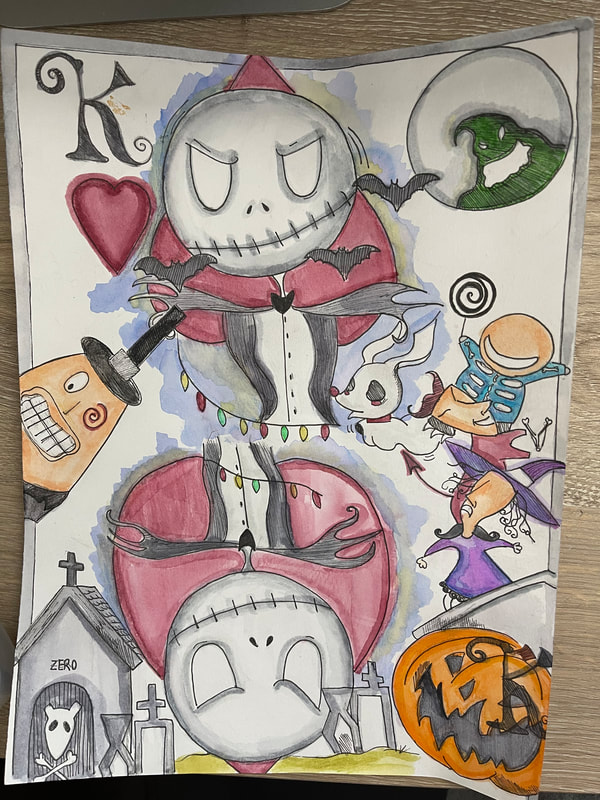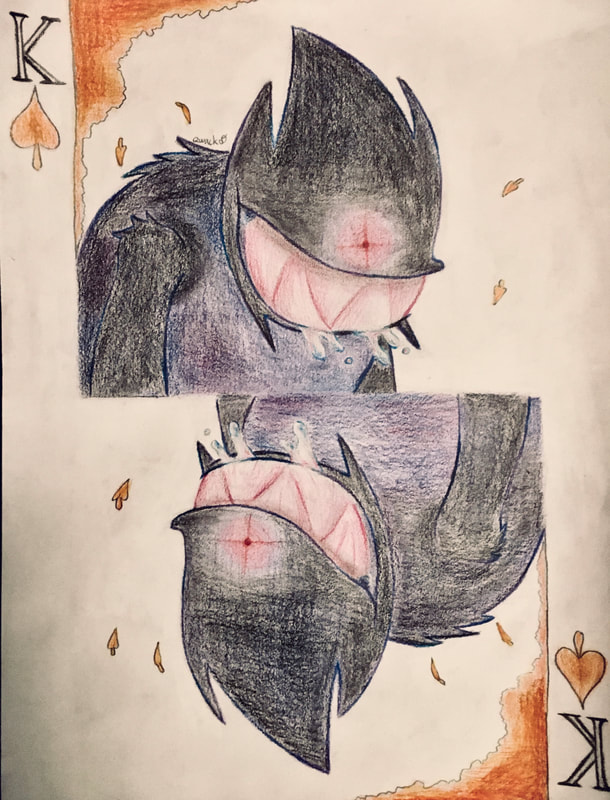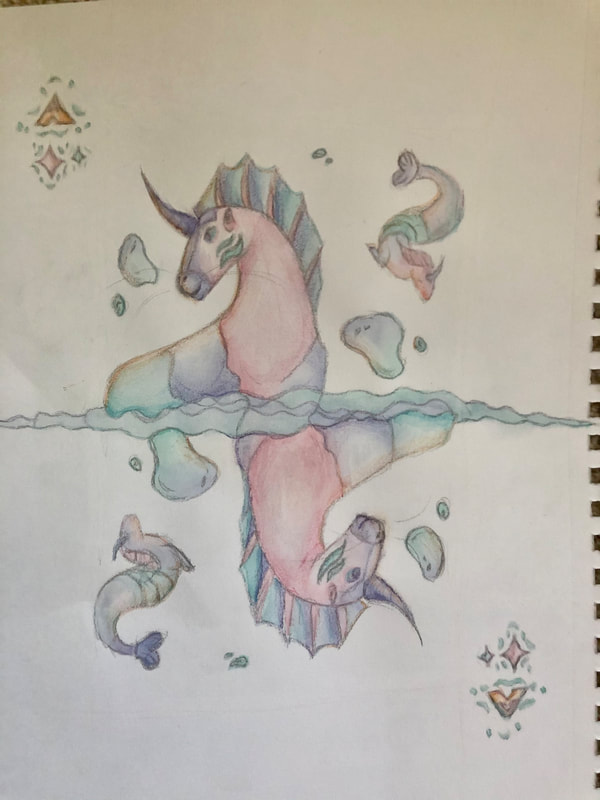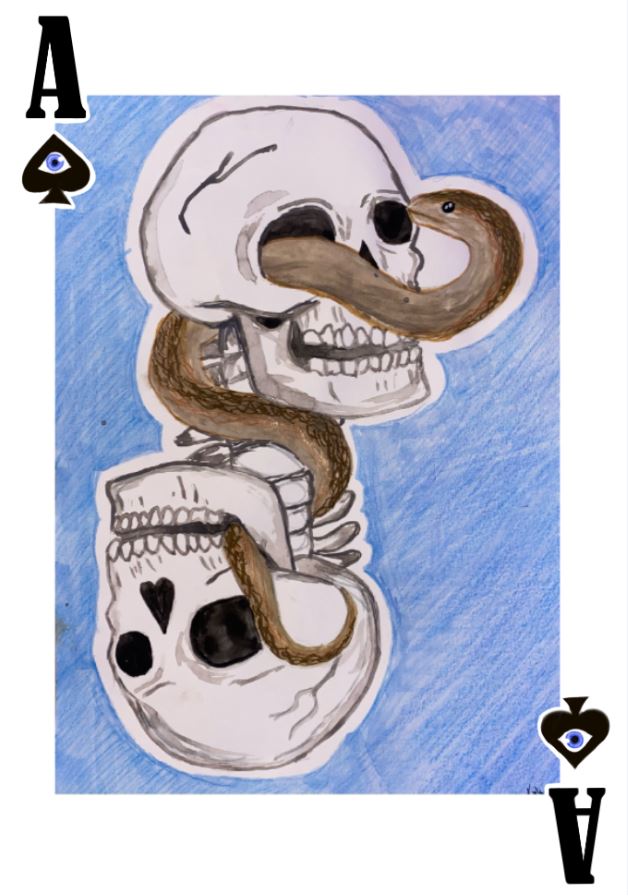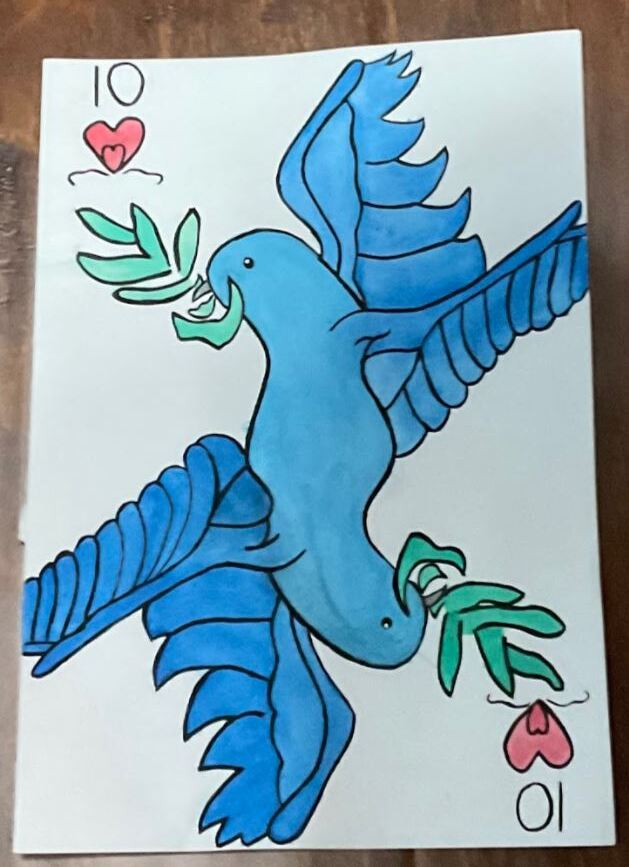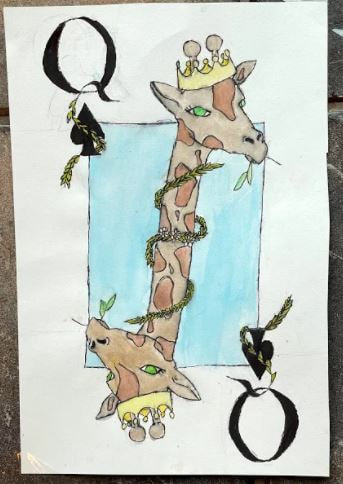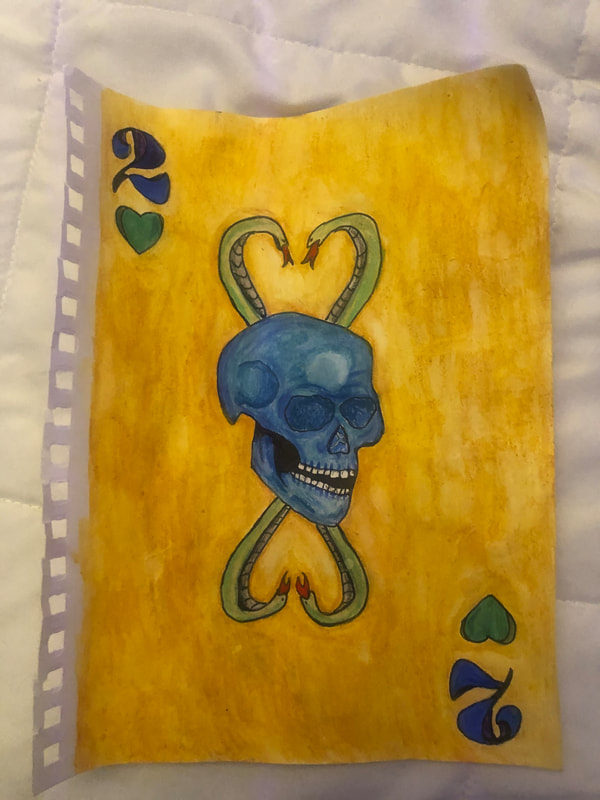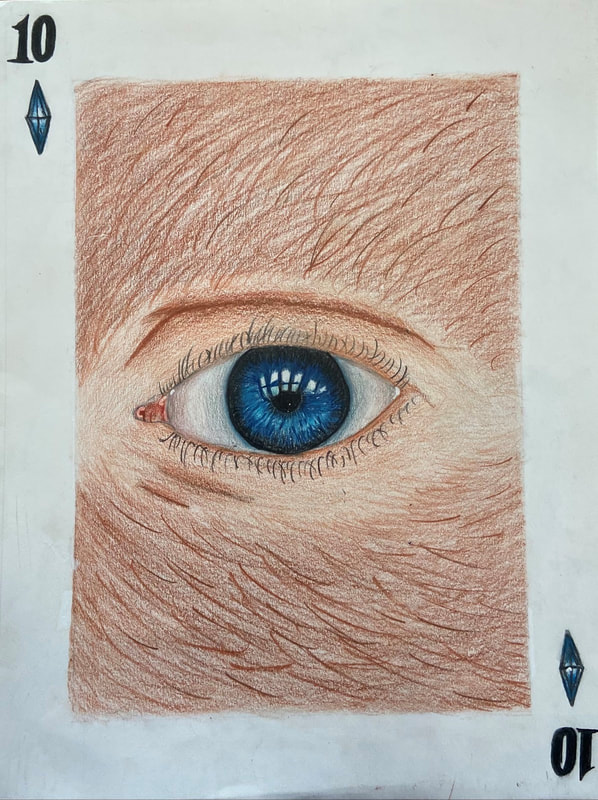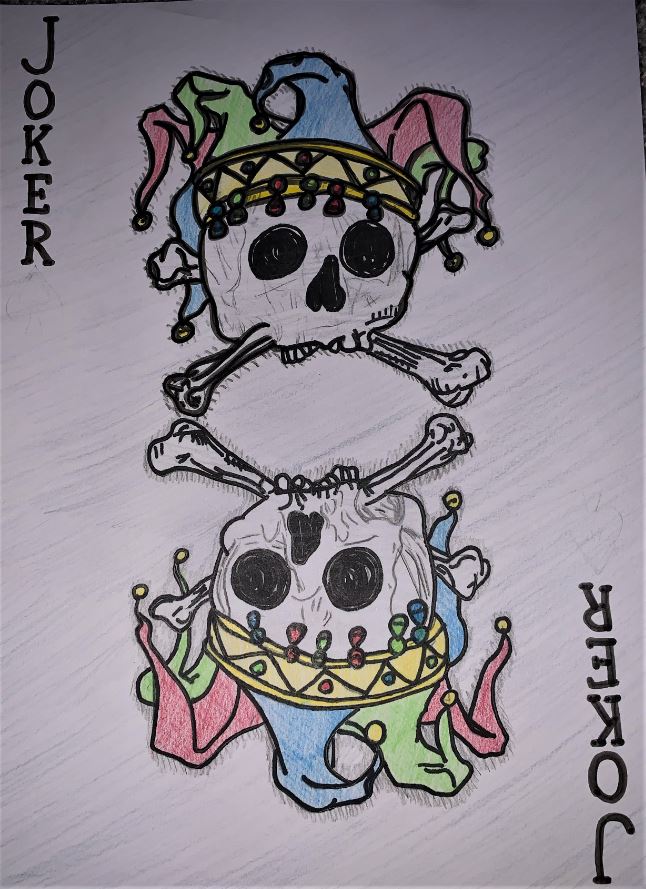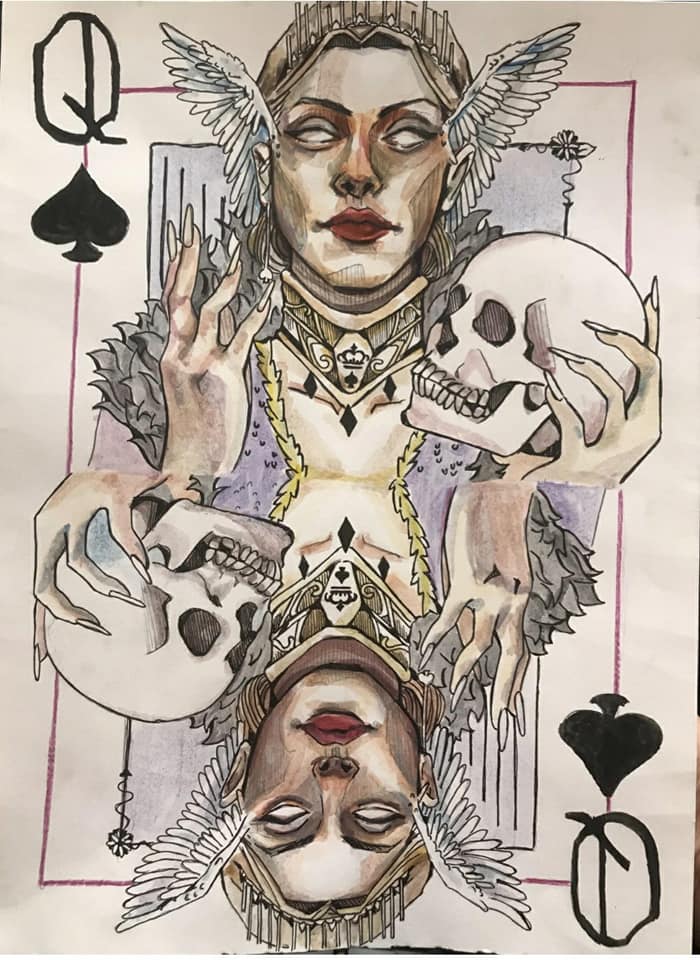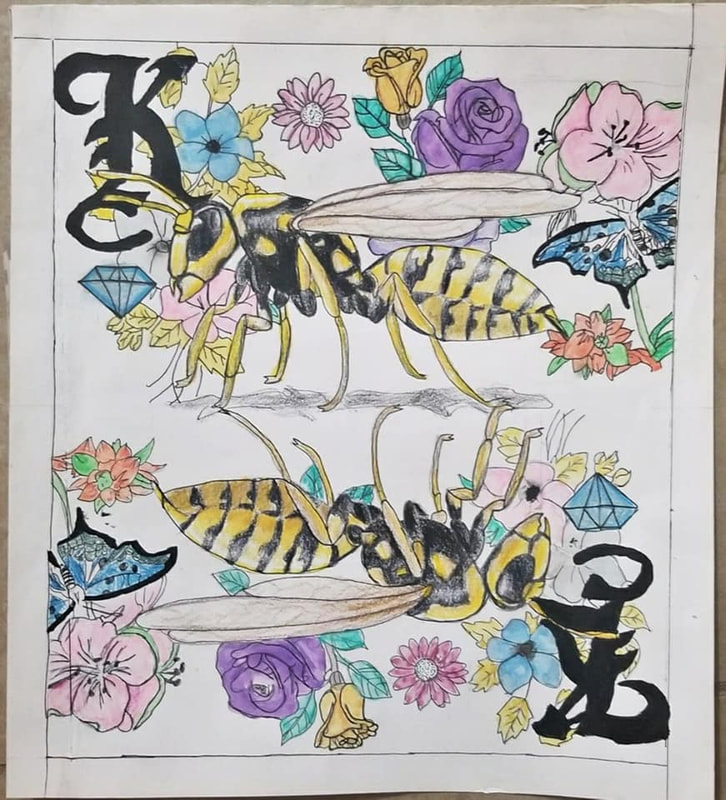Objectives:
- Understand the history of playing cards
- Design a suit, character, and number or letter
- Trace and flip design for a successful composition
- Demonstrate balance and unity within work
- Design a suit, character, and number or letter
- Trace and flip design for a successful composition
- Demonstrate balance and unity within work
Materials:
- Watercolor paint or watercolor pencils (refined, clean, and tonal value added) Strive for realistic form!
- Colored pencils (when necessary)
- Watercolor paper
- Colored pencils (when necessary)
- Watercolor paper
Arts Integration:
Math - Congruence and Transformations. Understanding reflection, symmetry and asymmetry
Your browser does not support viewing this document. Click here to download the document.
Where Playing Cards Come From?
We are all familiar with playing cards, and everyone has used them—most of us probably have a deck sitting in a drawer right now. But, have you ever considered the history of playing cards or wondered how they came into existence? These simple cards which most of us take for granted actually have a long and rich history. Many experts believe that they were invented in Imperial China and the earliest known reference to playing cards dates back to the 9th century during the Tang dynasty. Other historians believe that they originated in Persia and then spread to China, India and other parts of the world. However, it is difficult to ascertain their true origin as playing cards were made of such fragile material that no early samples have survived.
Regardless of where they first came from, playing cards finally arrived in Europe in the early 14th century, and it is believed that their appearance was the result of trade between Europe and Egypt. Initially, playing cards were made by hand which made them quite expensive and limited their use to the upper class and nobility. As paper quality improved and printing processes evolved, it became easier to reproduce playing cards and they became available to everyone. This led to an increase in the popularity of gambling and a fear that immorality would intensify from their use. As a result, the church and state intervened to control the sale and use of playing cards. Churches spoke out against the evil that card games inspired, and governments levied heavy taxes on makers and buyers of playing cards in an attempt to squash the negative influence that these cards were said to create.
Spades, hearts, clubs and diamonds, which are the four suits used in today’s playing cards, originated in France in the 1480s. In fact, the typical deck used today is often referred to as the French deck. Comprised of four suits, each suit of the French deck includes three face cards; the king, queen and jack with an image symbolizing the suit, an ace, and number cards from two to ten. Each card utilizes symbols of its suit, also called pips, to represent the number of the card, and the number or rank is also printed on each corner of the card to ensure readability when the cards are held in a fanned position.
With their long and interesting history, and their widespread use still today, playing cards are an integral part of today’s global culture. Wherever you go in the world, you’re likely to see a deck; sold in supermarkets and as souvenirs, or being used to provide a few moments of enjoyment in a card game, playing cards are everywhere. They are also a medium for expression and the sharing of information, and as such, their significance cannot be underestimated. So, the next time you’re looking for a new source of inspiration, deal yourself a hand of cards!
Regardless of where they first came from, playing cards finally arrived in Europe in the early 14th century, and it is believed that their appearance was the result of trade between Europe and Egypt. Initially, playing cards were made by hand which made them quite expensive and limited their use to the upper class and nobility. As paper quality improved and printing processes evolved, it became easier to reproduce playing cards and they became available to everyone. This led to an increase in the popularity of gambling and a fear that immorality would intensify from their use. As a result, the church and state intervened to control the sale and use of playing cards. Churches spoke out against the evil that card games inspired, and governments levied heavy taxes on makers and buyers of playing cards in an attempt to squash the negative influence that these cards were said to create.
Spades, hearts, clubs and diamonds, which are the four suits used in today’s playing cards, originated in France in the 1480s. In fact, the typical deck used today is often referred to as the French deck. Comprised of four suits, each suit of the French deck includes three face cards; the king, queen and jack with an image symbolizing the suit, an ace, and number cards from two to ten. Each card utilizes symbols of its suit, also called pips, to represent the number of the card, and the number or rank is also printed on each corner of the card to ensure readability when the cards are held in a fanned position.
With their long and interesting history, and their widespread use still today, playing cards are an integral part of today’s global culture. Wherever you go in the world, you’re likely to see a deck; sold in supermarkets and as souvenirs, or being used to provide a few moments of enjoyment in a card game, playing cards are everywhere. They are also a medium for expression and the sharing of information, and as such, their significance cannot be underestimated. So, the next time you’re looking for a new source of inspiration, deal yourself a hand of cards!
How to Get Started?
|
Your browser does not support viewing this document. Click here to download the document.
|
What is the Focus?
- Overall Balance and Unity within the piece
- Color theory will be very important!
- CRAFTSMANSHIP is key! Take care of the paper
- Clean fonts and outlines in your work!
- Illustrate an animal or character on your playing card!
Things to Consider:
- What animal do you want to be your character?
What will your animal wear? What style are you inspired by?
- What details will you use within your animal to drive home your concept?
- How will you include your suit and number/face card?
- What will your background and surrounding areas look like? What details will you include?
- How will you connect the two rotational images together in an interesting way?
